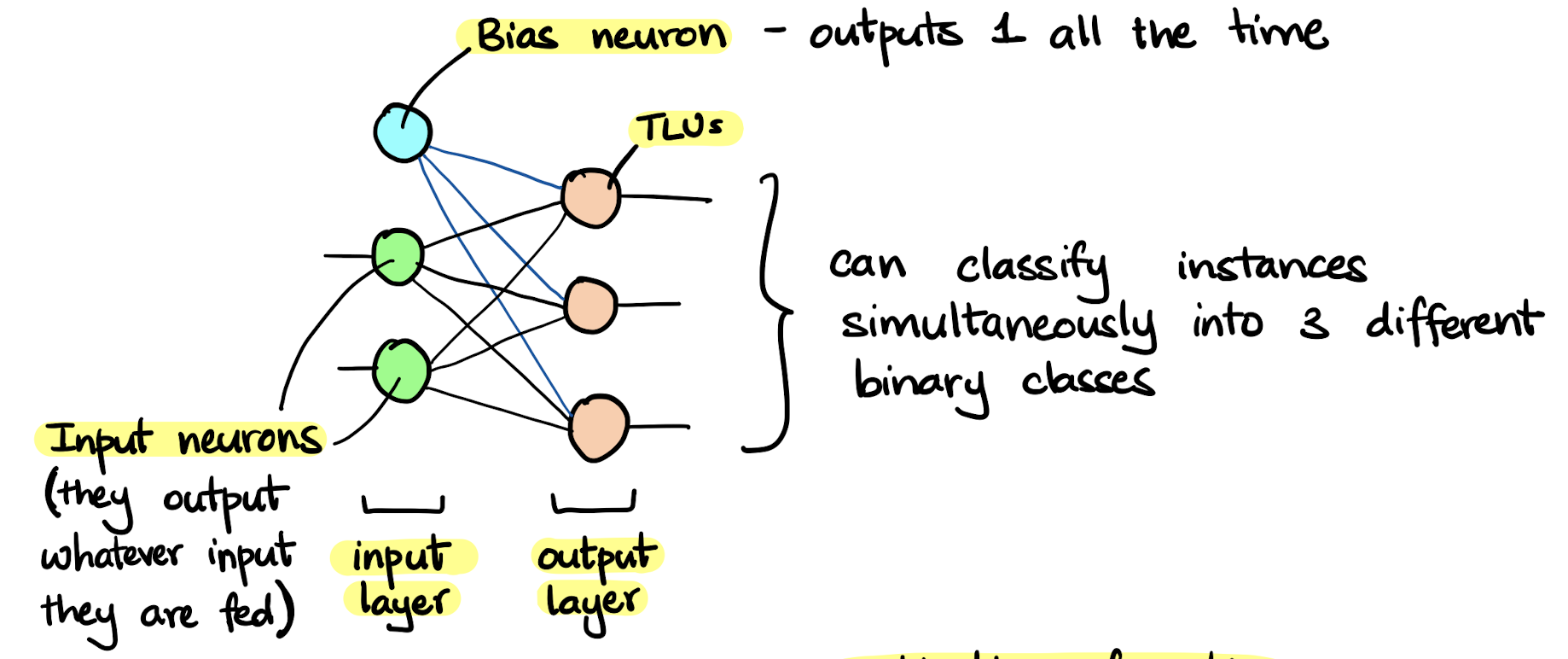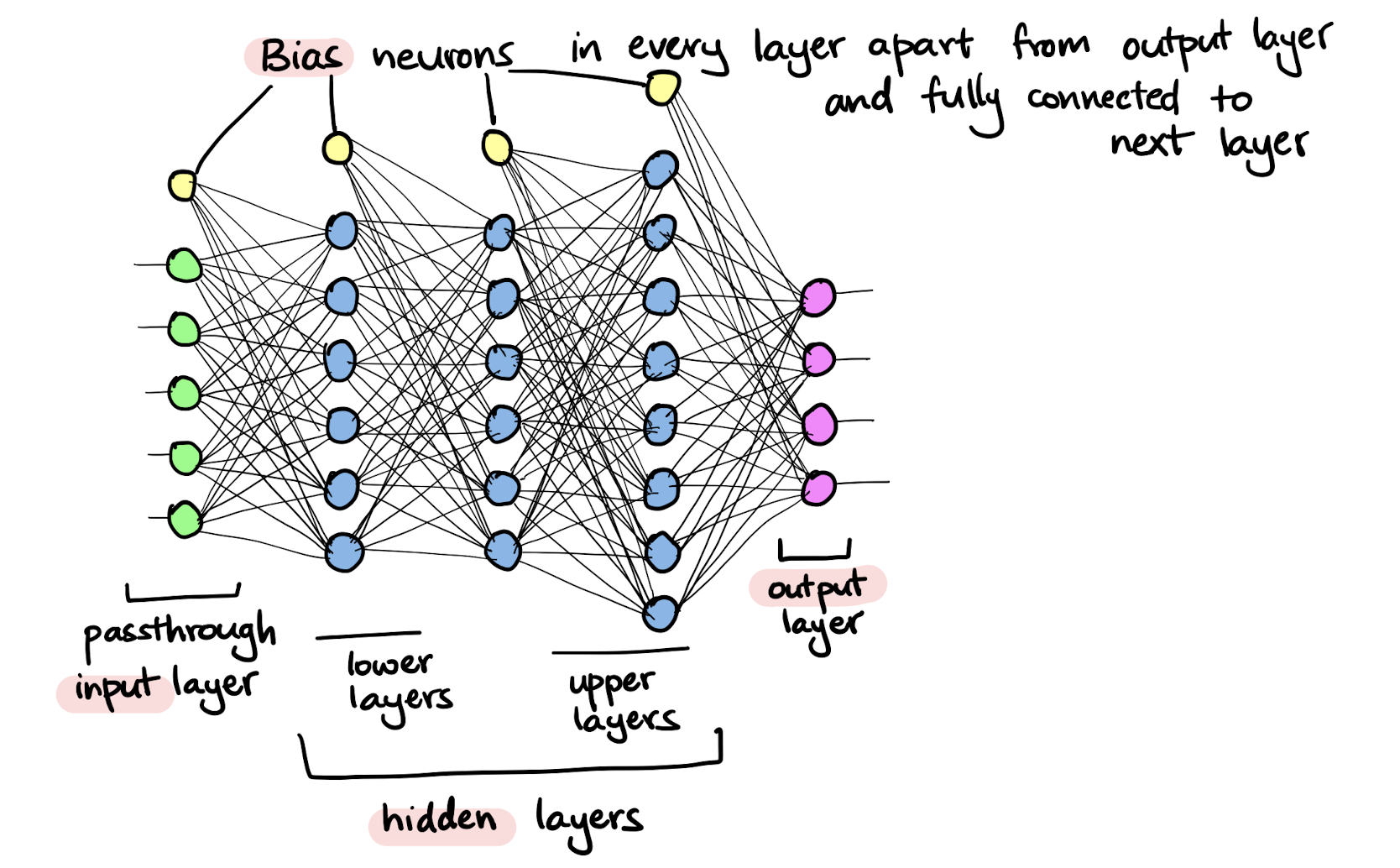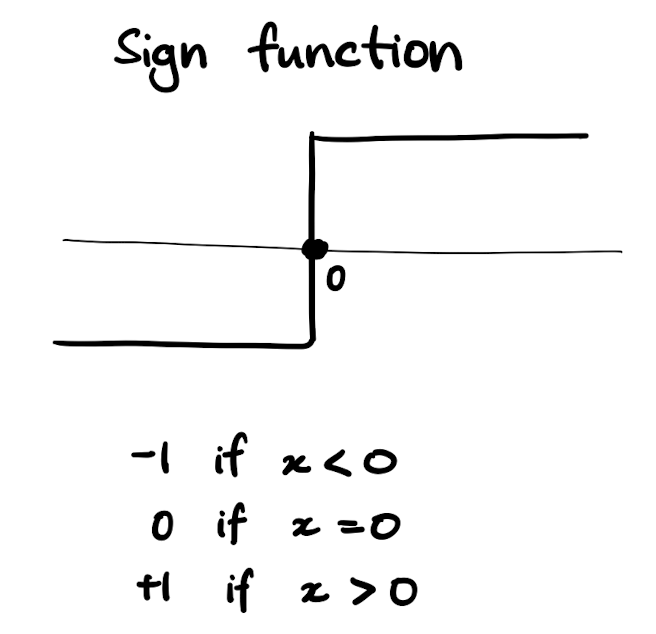Day 1 - The history of neural networks
The Artifician Neuron
- One or more binary inputs.
- Binary output that activates when more than a certain number of inputs are active.
Threshold Logic Unit (TLU)
- Real number inputs.
- Each input multiplied by a weight, and weighted sum calculated.
- Weighted sum passed through a step function (e.g. heaviside function or sign function).

Examples of step functions:
TLUs can be used for simple linear binary classification.
- TLUs compute linear combination of inputs.
- If the result exceeds a certain threshold, positive class is predicted.
- Training the TLU means finding the right weights.
The Perceptron
- Made up of a single dense layer of TLUs (each TLU connected to all inputs).

- The decision boundary of each output neuron is linear. As a result, they are incapable of learning complex patterns (e.g. XOR gate).
- Predictions are based on hard thresholds (no class probabilities).

- Trained using the Perceptron Learning Algorithm (PLA).

- Perceptron convergence theorem: if training instances are linearly separable, PLA will converge to a solution.
Multilayer Perceptrons (MLP)
- Obtained by stacking multiple perceptrons.
- Is a feed forward neural network - signal flows in only one direction (input to output).

- Trained using the backpropagation algorithm.

